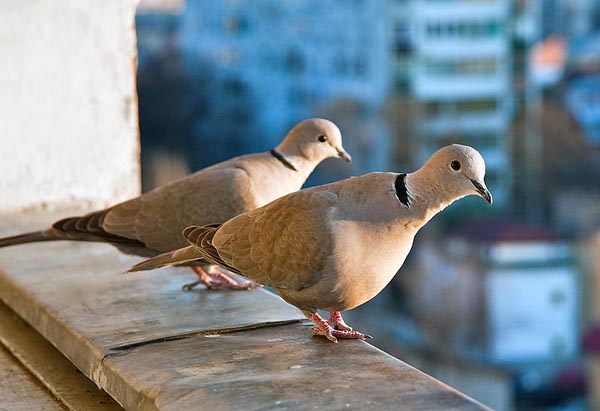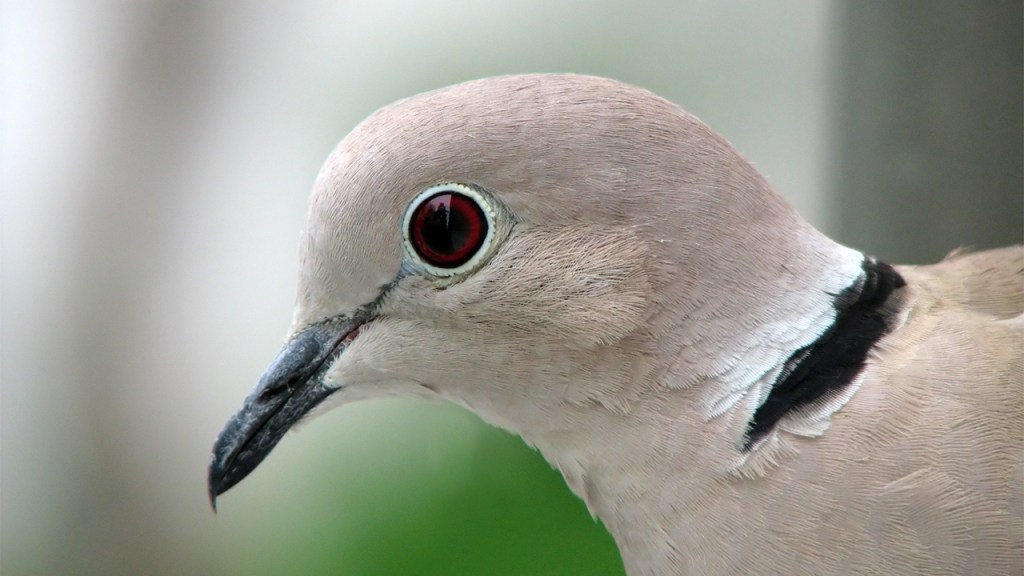The Great Backyard Bird Count (GBBC) — one of the largest citizen science initiatives in the world – annually documents a wide variety of bird population trends.
To my mind, one of the most interesting has been the dramatic spread of the non-native Eurasian collared dove across North America.
The GBBC asks citizen birders to watch an area for at least twenty minutes sometime during a four-day period in mid-February (this year’s count concluded yesterday), and record the birds they see.
Just ten years ago, seeing a Eurasian collared dove would have been a novelty. No more: the doves are now commonly reported by birders in most of the United States.
GBBC data tell the story of this rapid spread.
In the 1970s, the Eurasian collared dove was introduced to the Bahamas. By the early 1980s, the non-native birds made their way to South Florida, where they established populations. Then they began spreading north and west.
Their range appears to have expanded slowly at first. A look at GBBC reports from 1998 show a lot of sightings in Florida, with some birds reported in Texas, Alabama and Arkansas.
By 2001, the doves reached California.
Last year’s bird count results showed the Eurasian collared dove had colonized much of the country. It has not (yet) been reported in New England, but it has reached as far north as Alaska.
The GBBC’s video map dramatically illustrates this expansion.
In my state of Idaho, the doves were first recorded in 2005 by two backyard birders. In subsequent years, the bird was commonly reported in Idaho’s eastern corners. Last year, 132 GBBC participants reported 719 doves throughout the state.
I saw my first Eurasian collared dove in our backyard in 2008 – a banded bird that may have been an escaped pet. Last year, I began seeing the doves hanging around our neighborhood. This year was the first that I noted the species during my own participation in the Great Backyard Bird Count.
What’s going on here? Should conservationists be concerned about this spread?
Unlike some dove species, Eurasian collared doves aren’t migratory. However, they do readily expand into new suitable habitat. In fact, in their native Asia, Eurasian collared doves have been rapidly expanding their range as well – colonizing new countries every year.
The dove is one of those species that adapts well to humanity. The trees, power lines and bird feeders of suburbia provide perfect habitat. The Eurasian collared dove is almost always seen near homes and farms, not unbroken forest or prairie.
Research indicates it is not adversely affecting native mourning doves or other birds. It may simply be filling a new habitat niche created by suburban habitat. But it is still early in the spread.
Could Eurasian collared doves become an invasive threat? That remains to be seen.
Citizen science projects like the GBBC and another citizen initiative, Project FeederWatch, will help scientists continue to track the spread and impacts of the species. It will be interesting to learn what this year’s count found about Eurasian collared doves. If past years are any indication, their populations will likely have grown and spread into new areas of the country.
Have you seen Eurasian collared doves in your area? Have you noted other trends during your backyard bird counts? Let us know what you’re seeing!





There is a pair of Eurasian Collared Dove that frequent my bird feeder in El Segundo, CA
There are two Eurasian collared doves in my back yard this moment. Substantially larger than the two mourning doves that are keeping their distance. Sonoma County, California.
We have a mating pair in our backyard with one surviving off-spring in Boise, Idaho
I saw just one on Sunday May 21, 2017 , in Martin TN. Very pretty and larger than the morning doves that feed under my bird feeders normally. Happy birdwatching.
My wife and I, watch and feed a pair of these doves in our backyard. Very beautiful pair of doves, my wife says it’s the same two doves , years after year. Watching these birds, I noticed a few difference than the dove that we use to hunt in my younger days. Have these birds mixed with the native birds?
I live on the central coast of calif.
We just realized the larger mourning doves we’ve been seeing, and also have noticed in the wintertime, are actually Eurasian Collared Doves. We wondered why mourning doves were hanging around sw Minnesota in the winter!
Have a nesting pair in my backyard. Although I’ve had visitors for years this is the first time they have nested on my property. They choose an 80 foot cypress tree as their site, about 20 feet from the ground, and can be seen flying in with nesting materials. They feed off food we provide for several species of birds in the area which includes corn, black sunflower seeds and a small tan round see I don’t know the name of. They seem shy and a bit skittish but will sometimes remain at the feeder even when I’m nearby. They make a squawking/screeching sound when they fly and flap their wings awkwardly when trying to land in our fruitless mulberry tree above the feeder. When other types of birds are present they either feed with them on the feeder or on the ground. They are a joy to watch and are lovely to look at. I live in the Inland Empire in Southern California.
They are appear to be taking over and we may be less of other birds. They spend the night in the same trees and make a mess. Pierre SD
There are a pair of these Eurasian collared doves in Ramona California. They spend most of their time on the peak of the roof next door . They have lately been visiting my bird bath for water. Beautiful birds.
We have a pair. They’ve been here three years. We live in north western Illinois. German Valley to be specific.
They are in Gresham, Oregon. A pair has been here in my back yard near the feeders for about a week or two. Two Eurasian collared doves, with the complete black ring around the back of neck. Voice is a distinct three syllable sound: “Coo-coo – OOH!”, with the first two notes together and the third up a bit, like an exclamation mark. Not at all like the Mourning Dove, that only has the black patch below the earspots, and has a five syllable voice of: “Cu-COO! – oo – oo-oo”, which is up on the second part of the first sound, then down on the remaining three notes. They get on well with the other birds and feed alongside the usual mix of Sparrows, Grosbeaks, Redstarts, Orioles, etc. But those Starlings! Well – – –
I was just watching the feeder cam in Refugio, Texas on line and saw two Eurasian Collared Doves sitting on the fence that surrounds the feeder. This is at 6:35 PM Eastern time on 5/8/17.
There is growing number of these birds here in Kitimat , BC. They hang around our neighbor hood. I counted 8 in a tree the other day after I dropped my grandson off at school. I even noticed some in our neighbours to the north Terrace BC.
I have a pair nesting in my yard, a commercial lot , Fruitland, ID, right on hwy 95.
Eurasian Collored Doves
April 2017
A Eurasian collared dove has recently arrived in my garden in central Edinburgh Scotland. This bird has managed to find a way on to the bird feeder designed for smaller birds. I really like this dove ……much more delicate than the pesky common pigeons. This bird has enjoyed the range of food on offer from sunflower seeds to mealworms.